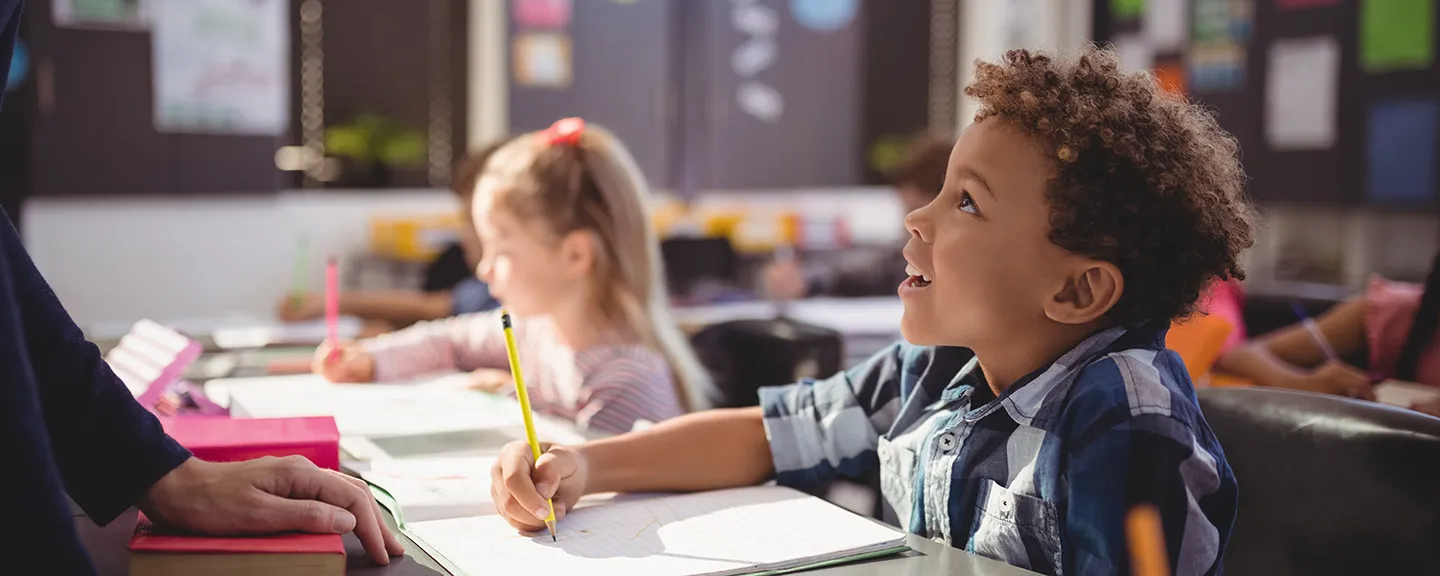- Home
- >
- APU Articles
- >
- News Article
Changing Credentials: A Look at the Future of Special Education
May 07, 2019 | Written By Heather Nelson

This means future teachers who are concentrating on special education will be equipped to serve a broader range of student needs in ways that look beyond labels. Here’s what you need to know if you’re interested in working toward your education specialist credential.
How Special Education Credentials Are Changing
In 2018, the California Commission on Teacher Credentialing approved a new structure for special education teachers to earn their credentials in the state. While there are many changes within the restructuring, two notable differences are getting the most attention: The requirement for candidates to master general education Teacher Performance Expectations (TPEs) and the ability to serve a wider range of disabilities within the student body.
While there are specific performance expectations for special education teachers, the requirement for these candidates to also master general education TPEs stems from the desire to see general education and special education teachers collaborate and better understand each other’s work. By having a common trunk of knowledge to pull from, all educators can be exposed to different perspectives on how to best assist students with and without learning disabilities.
In addition to more extensive TPEs, candidates will find themselves prepared to work with a wider range of student needs. In the current system, disabilities are categorized as either “Mild/Moderate Disabilities” or “Moderate/Severe Disabilities,” and educators are credentialed in one of the two categories. This means they are only able to serve students with certain disabilities that fall within their credential.
The new structure replaces these two categories with “Mild to Moderate Support Needs” and “Extensive Support Needs.” These credentials equip teachers to work within nearly all federal disability categories. This means that rather than solely focusing on a student’s federal disability category, the level of support a student needs will inform whether the teacher is equipped to work with them.
For example, if a student has multiple disabilities but does not need a high level of support, a teacher with a Mild to Moderate Support Needs credential can work with them. In the current system, only a teacher with a Moderate/Severe Disabilities credential would be able to work with this student. (Read the complete new education specialist program standards from the California Commission on Teaching Credentialing.)
The Future of Special Education Classrooms
So how might these changes affect the future of special education? According to Craig Bartholio, EdD, special education chair at Azusa Pacific University, only time will tell.
“It’s going to take a little time to see how this changes the classroom environment,” Bartholio said. “As districts have conversations about how this is going to translate into their classrooms, I imagine that they will look at all students and their levels of support regardless of learning environment. The future of a special education teacher will likely involve serving the students not only on their caseload but continuing to be a resource to all students.”
For years, special education teachers were viewed as a bit of an island in the school community, working with their own students in different ways and even in separate spaces, but that has been changing. Over the years, there has been a shift toward “push-in,” collaborative support in the general education setting, and Bartholio thinks these new credentials will continue that wave of change.
The idea of static classrooms—whether self-contained special education classrooms or general classrooms where services are provided to students with identified disabilities—may become something of the past, he said. “Schools may take a more fluid approach to educating all students in an environment that will meet their individual needs, regardless of whether they have qualified for specialized support and services or not,” Bartholio said.
“As we’re focusing on universal design for learning, I see the special education teacher as being a critical resource at helping the school look across all grade levels and classes,” he said. “They’ll be viewed as part of that team.”
Azusa Pacific Is Ready for the Future of Special Education
While these updates may come as news to some educators, Azusa Pacific had been preparing for the changes to special education credentials since well before 2018. In fact, when general education guidelines changed several years ago, the university’s School of Education knew special education credentials were soon to follow. To get a jump start, they decided to redesign the entire credential program.
Working together, general and special education professors created a new program that integrates learning from both perspectives. The program starts with six foundation courses, three of which are taken by both general education and special education candidates. The concept was created to lay the foundation for co-teaching, where general and special education teachers will work together to share knowledge.
“Even in a general education classroom, you’re going to have different types of learners, different primary languages, and as a teacher, you’re going to need to know how to approach all students and utilize the funds of knowledge they bring to the classroom and incorporate those into your instructional practices,” Bartholio explained.
When it comes to the future of special education and the shift toward a more holistic and integrated approach, educators-in-training at APU can feel confident they will be prepared for what comes next.
Are you interested in learning more about pursuing a career in education? Visit the School of Education at Azusa Pacific University, which offers credential programs and degrees in various educational areas including teaching, learning and technology, school counseling and psychology, and more.